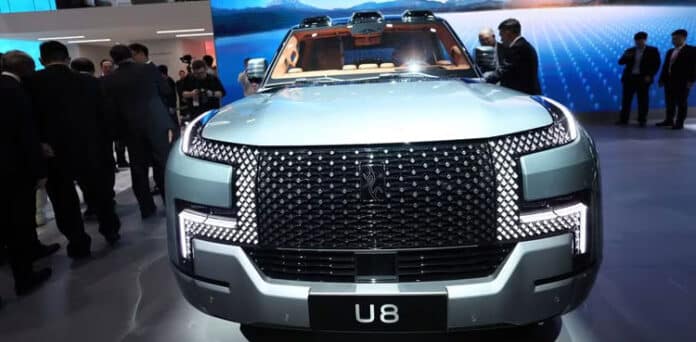BYD, a prominent Chinese automaker, made waves at the Geneva car show by showcasing its latest creation, the Yangwang U8 luxury plug-in hybrid SUV.
This vehicle boasts several innovative features, including the remarkable ability to float in water in case of accidents, adding an extra layer of safety for occupants. Additionally, the U8 stands out for its agility, with the capability to park sideways like a crab or execute a complete turn on the spot, facilitated by its four electric motors, one embedded in each wheel.
Although currently available exclusively in China, BYD is contemplating the possibility of expanding its market reach by exporting the Yangwang U8 to other regions. However, Guillaume Calvar, BYD’s marketing manager for France, hinted that some adjustments may be necessary to tailor the SUV to the preferences and regulations of potential foreign markets.
This cautious approach reflects BYD’s commitment to ensuring that its products resonate with consumers and meet the necessary standards wherever they are sold.
Since its debut in November, the Yangwang U8 has garnered significant attention and sales success in China. With over 3,600 units sold by the end of January, the SUV has proven popular among consumers despite its premium pricing, which starts at 1.098 million yuan (approximately $152,550).
The U8, BYD introduced the Yangwang U9 sports supercar in China, further expanding its portfolio of luxury vehicles. With pre-orders already underway and a starting price of 1.68 million yuan, the U9 aims to capture the attention of performance enthusiasts and bolster BYD’s presence in the high-end automotive market segment.
BYD is deliberating whether to introduce its luxury Yangwang brand to European markets, although no concrete decisions have been made yet. Currently, the company’s primary focus remains on its electric and hybrid vehicle offerings, along with the launch of its premium Denza brand.
This strategic approach underscores BYD’s commitment to innovation, sustainability, and meeting the evolving demands of global consumers in the automotive industry.


